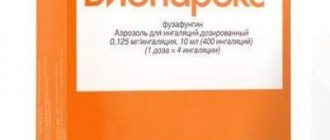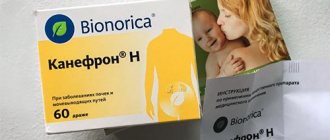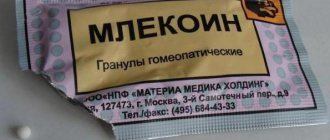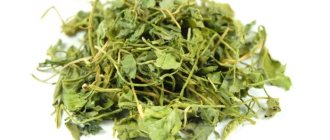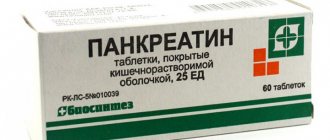A young mother during breastfeeding is susceptible to infectious diseases and any, even the most common, illness is more severe. And therefore you can’t do without medications! Local antibiotics are not absorbed into the blood and are practically safe for infants.
Levomekol ointment - composition, indications and methods of use during lactation. This is what we will talk about next.
Composition and effect of the drug
Levomekol is an effective antibacterial drug that can be used during breastfeeding. The medicine does not contain components that cause an allergic reaction.
The main active ingredient is a broad-spectrum antibacterial agent called Levomycetin. This substance is effective against a large number of pathogens that provoke abscesses on the inner membranes and skin.
Methyluracil is the second active ingredient of the drug, which stimulates metabolic processes. With its help, metabolism in the affected area is accelerated, and as a result, inflammation is reduced. Methyluracil penetrates into the deep layers of the epidermis, after which cell synthesis is activated and the normal structure of organs is restored. The immune system is strengthened and damaged tissues are quickly healed. The active component eliminates excess fluid from tissues, and as a result, swelling disappears.
Additional substances: polyethylene glycol-400, polyethylene glycol-1500. They are responsible for the uniform distribution of active substances throughout the volume of the ointment, facilitate the application of the drug and accelerate the penetration of the components into the affected tissue.
The ointment is packaged in aluminum tubes of 40 g or dark glass jars of 100 and 1000 g.
Pros and cons of use during lactation
The main factor in favor of choosing Levomekol ointment as a wound-healing drug during breastfeeding is its safety for mother and child, low likelihood of side effects and a wide antibacterial spectrum of active ingredients.
Attention! When treating cracks, you should refrain from applying ointment to the nipples and adjacent skin shortly before feeding, as the drug may enter the child’s mouth.
It is not recommended to use Levomekol ointment simultaneously with other topical antibacterial drugs.
Indications
Levomekol is deeply absorbed into the affected tissues without damaging cell membranes. The active components of the antibiotic do not enter the bloodstream, and therefore the medication is approved for use during breastfeeding.
The combined drug relieves inflammation, destroys pathogenic bacteria, and has a regenerating effect. Ointment is prescribed for:
- purulent wounds that arise as a result of tissue infection by pathogenic microorganisms;
- trophic ulcers that do not heal for a long time;
- burns of II and III degrees;
- pustular rash;
- otitis media;

- inflammation of the maxillary sinuses;
- uterine erosion;
- inflammation of the ovaries;
- boils, abscesses, infected deep scratches and abrasions;
- wound healing in the postoperative period or after childbirth.
And these are not all the problems that an effective wound-healing and antimicrobial agent can cope with.
Features of the use of Levomekol ointment during breastfeeding
When breastfeeding, Levomekol ointment is often prescribed by doctors of various specializations. Since it contains a broad-spectrum antibacterial agent, it helps the body of a nursing woman, often weakened by pregnancy and childbirth, cope with the infection and prevent its development and spread.
The safety of the drug is also very important - it does not enter the general bloodstream and does not have a systemic effect. It also does not affect the quality and quantity of breast milk and does not penetrate into it. And as a result, if used correctly, the active components will not end up in the baby’s body.
Directions for use:
- For cracked nipples or treatment of mastitis in the initial stages, the ointment should be applied to a bandage that is applied to the painful, reddened, compacted area of the chest or wound. The ointment accelerates the resorption of swelling and improves milk flow. If use begins at the stage of suppuration inside the mammary gland, the abscess must first be opened and drained surgically. Only after this can Levomekol ointment, heated to body temperature, be introduced into the wound cavity through a drainage tube. In this case, Levomekol will help cleanse the wound of purulent masses and inflammatory exudate. The top of the wound is covered with a sterile bandage, which is replaced as it becomes saturated with discharge, but at least once a day. After the wound has dried, treatment with Levomekol should be continued, as the ointment will promote rapid tissue regeneration. The course of treatment should not be less than 7 days.
- When treating sutures after surgery or childbirth , the ointment is applied directly to the skin in the suture area. Before applying the ointment, the skin is treated with an antiseptic. A sterile gauze bandage is applied on top, which is secured with a plaster or bandage. In this case, the use of Levomekol helps prevent infection of the sutures and reduce their healing time.
- The ointment is also very effective in treating hemorrhoids After hygienic procedures, preferably before bed, a cotton swab is soaked in it and applied to the anus (for external hemorrhoids) or inserted into the rectum 1-2 cm (for internal hemorrhoids). The ointment helps prevent infectious complications, relieves swelling, heals microtraumas in hemorrhoids and improves the condition of the mucous membranes.
- The ointment is also used in the treatment of inflammatory diseases of the uterus and appendages , as well as in combination therapy of cervical erosions. To do this, soak a cotton or gauze swab with it and insert it as deep as possible into the vagina. It is most convenient to do this before bed, since after administration you need to take a horizontal position for at least 2 hours. The course of treatment must be at least 5 days.
- Levomekol is often used to treat inflammation of the ENT organs , but it needs to be used in different ways. For rhinitis, ointment can be lubricated from the inside of the nasal passages several times a day. Treatment of sinusitis requires preliminary rinsing of the nasal sinuses with an antiseptic, and then administration of the ointment. For otitis, cotton cords or turundas are soaked in ointment and not inserted too deeply into the ear canal. The course of treatment must also be at least 7 days.
- If a nursing woman has worsened pustular skin diseases , Levomekol can also help. If the rashes do not have purulent cavities, applying ointment can help them resolve. In the case of purulent contents of pimples, boils, the ointment promotes their faster “ripening” and bursting with the release of the contents. And after cleaning, the wounds will heal much faster without the formation of age spots and scars.
- Wounds, abrasions and injuries may also require the use of Levomekol. For shallow, non-infected skin lesions, the ointment will help speed up skin regeneration. It should be applied directly to the surface, covering the outside with a bandage. If there is discharge or pus in the wound, this will not prevent Levomekol from demonstrating its healing properties. The ointment easily penetrates the site of inflammation, destroys pathogenic flora and reduces tissue swelling. To do this, it is advisable to introduce it directly into the cavity of the abscess. After cleansing the wound, its rapid healing and epithelization will begin. In this case, the dressing is changed several times a day, as it soaks, and treatment continues until healing.
- When treating burns, Levomekol significantly reduces the time of skin regeneration and helps prevent infection of the moist wound surface. The ointment is applied either to the skin or to a sterile gauze pad secured with a bandage.
- To speed up the resorption of infiltrates after insect bites, a small amount of ointment can be applied directly to the area of irritation. There is no need to put a bandage over it.

Methods of application
Sometimes the area treated with Levomekol burns slightly, but this is not dangerous. But if the affected area (wound or mucous membrane) begins to look worse: swelling increases or an allergic reaction appears in the form of a rash, then you need to stop using the drug and visit a doctor. This is especially true for patients during lactation or pregnancy.
How to treat affected skin areas with Levomekol? Usage option: lubricate the wound with ointment, but make sure that the layer is thin and even. Repeat the procedure twice a day, the course of treatment is from 5 to 10 days, until the wound is completely healed.
For an abscess, Levomekol is injected into a cavity filled with pus, but the ointment must first be heated to 36°. The drug is used to impregnate gauze pads, which are then applied to purulent wounds or burns. For boils and abscesses, you need to visit a surgeon who will open the purulent cavity for further treatment with bandages with ointment.

If the maxillary sinuses are inflamed, the nasal passages should be rinsed with a warm salted solution (3 g of salt per 220 ml of boiled water). The patient is turned over on his left side, and a tampon, which has been previously soaked with ointment, is inserted into the nasal passage. You need to lie down like this for 15 minutes, then turn over on your right side and repeat for the right nostril. This way the antibiotic will better penetrate the nasal cavity. If the patient has purulent otitis, then tampons are inserted into the ear canal.
During breastfeeding and pregnancy, the ointment is used for the complex treatment of colpitis, inflammatory diseases of the external genitalia, and thrush, which has severe symptoms: severe itching, burning, inflammation. The ointment is applied externally or soaked tampons are used, which are inserted into the vagina.
However, it should be borne in mind that Levomekol simply relieves the symptoms of candidiasis and does not cure the disease. Therefore, the drug must be used as part of complex therapy. External use of the antibiotic is safe, but before intravaginal use it is necessary to conduct an analysis, as undesirable reactions may occur.
It is important to know that the active components of the drug are effective against not only pathogenic, but also beneficial bacteria. And this threatens to worsen thrush.
Mode of application
- The ointment is applied to the damaged tissue in an even, thin layer. You can cover the application site with a sterile bandage. It is recommended to carry out the procedure twice a day; before application, treat the surface with an antiseptic.
- For gynecological diseases, it is necessary to soak the tampon with ointment, and then carefully insert it into the vagina.
- For otitis media, Levomekol is applied to cotton wool or gauze and then placed in the ear canal. Approximately the same procedure can be carried out for sinusitis, but first you should rinse the nasal sinus with a warm salt solution. You can prepare it yourself by adding a teaspoon of table salt to a glass of water.
- If it is necessary to introduce ointment into the area of the abscess, then it is preheated to a temperature of 36 degrees. Then it is administered using a regular syringe.
- When Levomekol is prescribed for the treatment of hemorrhoids, it is recommended to make small napkins from ointment and a sterile bandage, which are used as lotions.
- For inflammation and cracks in the nipples, the ointment is applied directly to the damaged area. But before feeding, you should wash the nipple, since Levomekol has an unpleasant, bitter taste.
Levomekol for hemorrhoids
Levomekol is an effective remedy for hemorrhoids. And this is a typical problem for women during pregnancy and breastfeeding. The antibacterial drug is aimed at destroying pathogens, and this is very important for hemorrhoids, which can be complicated by a viral attack. The addition of infection threatens further spread of purulent inflammation.

Levomekol is a safe drug that does not contain toxic substances; moreover, the ointment is used externally, which practically eliminates negative effects on the body. The active components are aimed at destroying pathogenic microflora and healing hemorrhoids.
An antibacterial agent can be used to prevent microscopic damage to hemorrhoids that bleed and often become infected. The drug for hemorrhoids stops the infectious process and prevents complications.
Analogs
There are drugs that can replace Levomekol in their properties:
- Levosin
- Fastin
- Protegentin
- Lintezin
- Streptonitol
These ointments can be used while breastfeeding. All of them are intended for external use. But before starting therapy, you need to consult a specialist. In addition, it is not recommended to violate the dosage and abuse the application of the drug to the site of injury. This may lead to undesirable consequences.
Any medicine should be used with caution when breastfeeding. Medicines should be taken only under the supervision of a doctor - this will help not harm the child and quickly get rid of the unpleasant symptoms of a particular disease.
Is Levomekol safe while breastfeeding?
The use of Levomekol during breastfeeding is indicated to eliminate inflammatory processes on the skin and mucous membranes. How safe is the ointment during lactation? Let's take a closer look at the indications for use and side effects of Levomekol.
Levomekol is often prescribed to nursing mothers to combat various types of purulent inflammatory processes.
Levomekol during lactation
Most nursing and pregnant women are wary of drug treatment, as the drugs can harm the baby. This is only possible if the woman self-medicates. A qualified doctor prescribes a drug only after a thorough examination, taking into account the possible effects of the active components on the body of the mother and newborn.
The main components of the antibacterial medication do not penetrate into the bloodstream and mother's milk. Based on this, Levomekol is permitted during pregnancy and breastfeeding. In addition, doctors recommend using this ointment to treat cracked nipples and inflammation of the mammary gland (an acute form of the disease). This is very important for nursing mothers, since these diseases disrupt lactation, which threatens a decrease or complete burnout of milk.
Levomekol is used to prevent purulent inflammatory processes in the soft tissues of the breast after childbirth. An effective drug that quickly destroys bacteria, preventing serious illness.

With purulent inflammation of the skin, even if it is not a large wound, but a small boil, general intoxication may occur. Poisons of microbial origin penetrate into the blood and breast milk, which is much more dangerous for a baby than the possible effect of a local medication!
Inflammation of the maxillary sinuses or auricle is a very dangerous disease for pregnant and lactating women. If pathological microflora penetrates the blood or brain, then to treat this disease you will need strong antibacterial drugs that can harm the child.
Therefore, follow the treatment regimen that your doctor has chosen for you, do not change the dosage, and follow the regimen of taking the drug. The lactation period is a very important period, and therefore a woman should monitor her health. If during treatment you notice an allergic rash or your health worsens, immediately consult a doctor who will select another drug.
Indications for use
Levomekol ointment is used in many areas of medicine:
- dentistry;
- otolaryngology;
- gynecology;
- surgery.
In cases where treatment of wound injuries is necessary, this drug shows itself well in the first phases of the process occurring in the wound. The main indication when Levomekol is prescribed for hepatitis B is purulent wounds infected with microbial flora. It cleans the wound during the purulent-necrotic phase, reduces inflammation in the granulation phase.
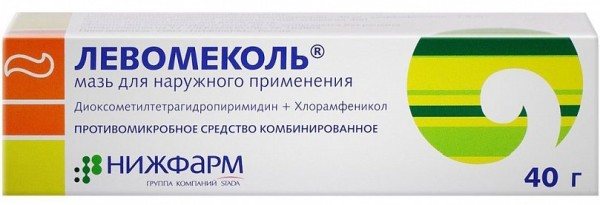
When active healing and scarring occurs, the use of antibiotic ointment is no longer necessary. In this case, Levomekol is replaced with a more suitable agent, for example, methyluracil ointment.
During lactation, Levomekol can be prescribed in the following situations:
- for processing sutures after caesarean section;
- in the treatment of purulent mastitis;
- in case of injury.
Reduced immunity after childbirth may malfunction, while wounds and boils may heal more slowly and be accompanied by infection. It often happens that a nursing woman’s body is unable to cope with the disease without the use of additional means.
The ointment is contraindicated in case of individual sensitivity to the components or the presence of an allergic reaction to this product. If an allergic reaction occurs as a result of use: itching and rashes on the skin, treatment with this product should be discontinued.
Contraindications and side effects
If you use Levomekol correctly, the drug will not cause side effects. In rare cases, hypersensitivity to the components of the drug is possible. Allergies are accompanied by the following symptoms: redness, rash, itching, and sometimes hives. Chloramphenicol may cause a similar reaction.
The combined use of Levomekol with other ointments is not recommended, especially during pregnancy and lactation.
Follow the rules of admission and follow the instructions of your doctor. Subscribe to our VKontakte group
Side effects and contraindications for use
Levomekol has few contraindications, since it is a low-reactogenic drug (it contains a small amount of active and auxiliary components). The main thing when it is not recommended is individual intolerance to the components of the ointment, most often the antibiotic chloramphenicol. You should not use Levomekol in the treatment of psoriasis and fungal infections. Other chronic diseases or other organ dysfunctions are not a contraindication to the use of the ointment.
Side effects of Levomekol ointment very rarely manifest themselves in the form of allergic reactions: redness, itching of the skin, hives at the site of application of the medicine. When used externally, no cases of overdose of the drug have been identified, which confirms its safety even in pregnant women and women during lactation.
Indications for hepatitis B
Levomekol is a combination drug with pronounced antimicrobial, anti-inflammatory, and regenerating properties. White ointment without a specific odor for external use.
Scientific studies have proven that the drug is not absorbed into the skin and does not enter the bloodstream, which means it cannot enter the baby’s body through breast milk.
The ointment helps increase local immunity, and therefore wounds and cracks heal faster, the integrity and elasticity of the skin and mucous tissues are restored.
Levomekol is prescribed by the doctor for:
- eliminating infection from the damaged area;
- healing of sutures after surgery;
- treatment of bacterial rhinitis;
- relieving pain due to lactostasis, mastitis;
- healing of calluses, bedsores, cracks, minor damage to the skin;
- discharge of pus from hemorrhoids.
The effectiveness of using the drug in combination with other drugs is high. The ointment is combined with antibiotics and anabolic agents, helping to eliminate factors for the development of the disease.
The ointment should be stored at a temperature no higher than 20 degrees, away from children. Avoid direct sunlight exposure of the medicinal product. If the integrity of the bottle is damaged, discard the ointment.
